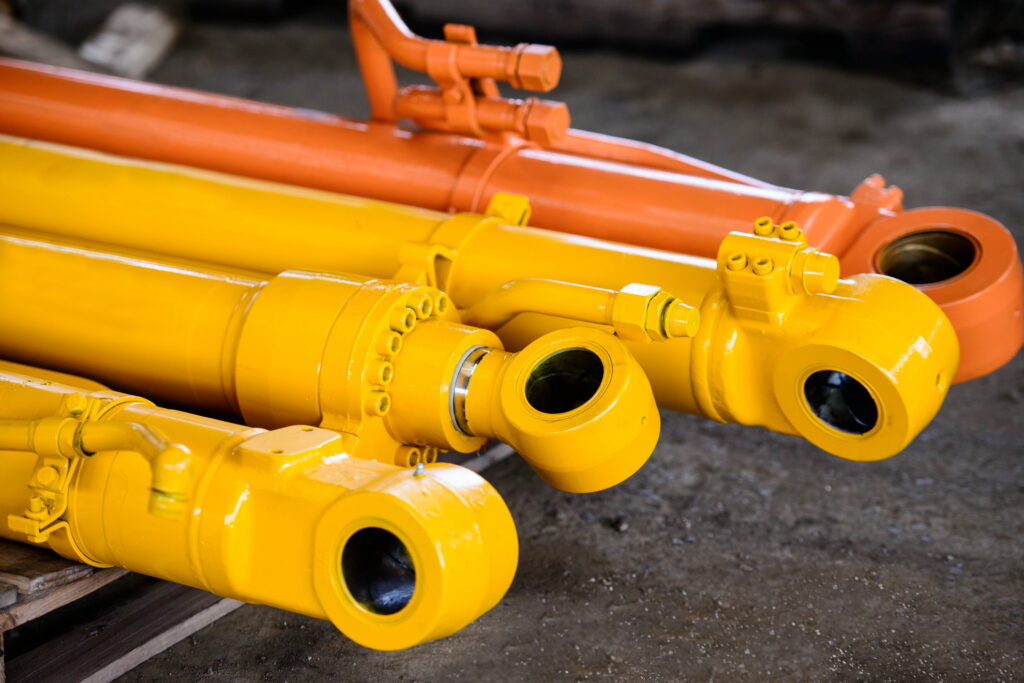Comme un a professional manufacturer and supplier of cylindre hydraulique d'excavatrice,TongZhou share the knowledge about:
how to repacking hydraulic cylinder
Repacking a vérin hydraulique involves replacing the seals that keep the hydraulic fluid inside the cylinder and prevent leaks. Here are the steps to repack a hydraulic cylinder:
- Take the cylinder out of the machine. You need to take the cylinder out of the machine before you can start to repack it. Follow the instructions from the manufacturer and use the right tools to safely disconnect the hydraulic lines and take off any mounting bolts or brackets.
- Disassemble the cylinder: Once you’ve taken the cylinder out of the machine, you’ll need to take it apart by removing the end caps, scellés, and any other parts that keep you from getting to the piston and rod.
- Remove the old seals. Carefully use a seal removal tool or a flathead screwdriver to remove the old seals from the piston and rod. Be careful not to scratch or hurt the piston or rod’s surface.
- Clean the parts of the cylinder. Use a degreaser and a clean cloth to clean the parts of the cylinder well. Make sure to clean the barrel, piston, tige, and end caps of the cylinder to get rid of any dirt or residue.
- Install the new seals. You can use a seal installation tool or your fingers to put the new seals on the piston and rod. Make sure the seals are lined up right and that they are all the way in their grooves.
- Once the new seals are in place, carefully put the cylinder back together by putting back the end caps, scellés, and any other parts that were taken off.
- Reinstall the cylinder: Enfin, use the right mounting bolts or brackets to put the cylinder back on the machine and reconnect the hydraulic lines according to the manufacturer’s instructions.
After repacking the hydraulic cylinder, it’s important to test it thoroughly before using it for heavy-duty tasks to ensure that there are no leaks or other issues.
Structure of hydraulic cylinder
The hydraulic cylinder is an important part of many machines and industrial tools, such as excavators, cranes, and backhoes. It is a machine that turns hydraulic energy into mechanical force. This gives heavy loads or other tasks the power they need to be moved or done.
A hydraulic cylinder is usually made up of several main parts, such as the barrel, piston, tige, end caps, scellés, and other accessories. The barrel is the main part of the cylinder. It is usually made of high-strength steel so that it can handle the high pressure and rough conditions of the application.
The piston is a cylindrical part that moves back and forth inside the cylinder barrel. This back and forth movement creates the hydraulic force that the cylinder needs to work. Most pistons are made of high-strength steel, and they have a way to seal so that hydraulic fluid doesn’t leak out of the cylinder.
The rod is attached to the piston and sticks out of the barrel of the cylinder. It is also made of high-strength steel and sends the force made by the piston to the load or application outside of the engine. The end caps are bolted to the cylinder barrel and create a sealed enclosure. The seals keep hydraulic fluid from leaking out of the cylinder.
Hydraulic cylinders also come with extra parts like ports, tuyaux, and valves that let you control how much hydraulic fluid flows through them and how much pressure is put on them. These parts are important for the hydraulic system to work well and make sure the cylinder works smoothly and efficiently.
hydraulic cylinder for Excavator
Hydraulic cylinder is a crucial component in an excavator that enables it to perform heavy-duty tasks such as digging, lifting, and carrying loads. The hydraulic cylinder in an excavator usually has a double-acting piston design, which includes a cylinder barrel, piston, tige, end caps, and seals.
Excavators typically use hydraulic cylinders in the following applications:
- Cylindre de flèche: The boom cylinder is a hydraulic cylinder that is mounted between the excavator’s main body and the boom. It is used to raise and lower the boom, which is the long arm that extends from the excavator’s main body and supports the digging bucket.
- Arm Cylinder: The arm cylinder is a hydraulic cylinder that is mounted between the boom and the digging bucket. It is used to control the arm’s movement, which is the shorter arm that supports the digging bucket and enables it to move up and down.
- Cylindre de godet: The bucket cylinder is a hydraulic cylinder that is mounted between the arm and the digging bucket. It is used to control the bucket’s movement, which is the part of the excavator that actually digs into the ground and picks up material.
The performance and reliability of hydraulic cylinders in excavators are critical to the overall productivity of the machine. Regular maintenance and inspection are necessary to ensure that the cylinders are operating at their best. This includes checking for leaks, ensuring the seals are in good condition, and inspecting the piston and rod for signs of wear and tear.
Overall, the hydraulic cylinder is an essential component in an excavator that helps to provide the force needed to perform a wide range of excavation tasks. With the proper maintenance, hydraulic cylinders can provide reliable and efficient performance for many years.

Excavator hydraulic cylinders are typically double-acting cylinders, meaning that they use hydraulic fluid to move the piston and rod in both directions. They are also usually equipped with heavy-duty seals and wear rings to withstand the harsh operating conditions of excavation work.
